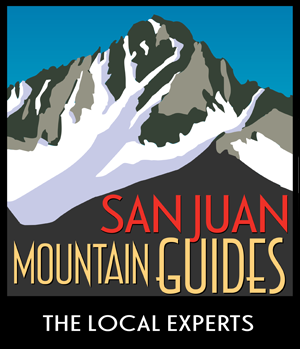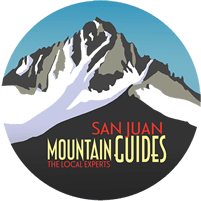Mount Bona Expedition
Wrangell St. Elias National Park

The Mount Bona Expedition takes place in The Wrangell – St. Elias mountain range in Alaska. The Wrangell, and St. Elias mountain ranges converge in what is often referred to as the “Mountain Kingdom of North America”. The largest unit of the National Park System and a day’s drive east of Anchorage, the park-preserve includes the continent’s largest assemblage of glaciers and the greatest collection of peaks above 16,000 feet. Mount St. Elias, at 18,008 feet, is the second highest peak in the United States. Adjacent to Canada’s Kluane National Park, the range is characterized by remote mountains, valleys, wild rivers, and a variety of wildlife.
The expedition begins in Anchorage before traveling to Chitina, AK and our awaiting bush plane – courtesy of Paul Claus and his Turbo Otter. The bush flight into the Klutlan Glacier and the site of our basecamp on Mt. Bona is one of the most scenic flights in North America and offers view of both the Wrangell and St. Elias Mountains.
Gain Valuable Alaska Expedition Experience
The Mount Bona Expedition is designed for the mountaineer that wants practical skills climbing on high, glaciated mountains. The expedition is the perfect warm up or precursor to a Denali Expedition which many participants have in their sights for the following year. The expedition covers alpine snow and ice climbing skills, snow camping, glacier travel, crevasse rescue, glacier navigation, and high altitude climbing. The remote and pristine arctic setting will prepare you well for expeditions to the Himalayas, Andes or Denali. Participants need to have basic mountaineering and backpacking skills before signing up for this course.
As a blind climber, I’ve done expeditions all around the world and dealt with all kinds of local outfitters and guide services; San Juan Mountain Guides is the best! - Erik Weihenmeyer
Mount Bona Expedition Itinerary

Itinerary Note
As with all climbs in Alaska – and specifically with the remote Wrangell St. Elias National Park, it’s best to approach this expedition with a flexible attitude and be prepared to move camp, climb, and generally get things done when the opportunity presents itself. Weather, route conditions, team dynamics, and a host of other factors can influence how our team decides to adjust the itinerary to give us the best chance for success and safety while on the mountain.
Day 1
Arrive in Anchorage. Meet as a group and do an equipment check. Stay in a local hotel.
Day 2
Drive to Chitina where we then fly into the Ultima Thule Lodge on the Chitina River. We may also choose to fly directly into basecamp on this day.
Day 3
Fly to our base camp on the Klutlan Glacier at 10,500 feet. An amazing flight into the Alaskan wilderness. After we’ve been dropped off, we’ll make and fortify camp right next to the airstrip, and begin our training.
Day 4
Training day. Focusing on glacier travel and crevasse rescue, we will teach and train such topics such as roped glacier travel, self and team arrest, snow anchors, and hauling systems. These skills will immediately be put to use as we make our way up the mountain.
Day 5
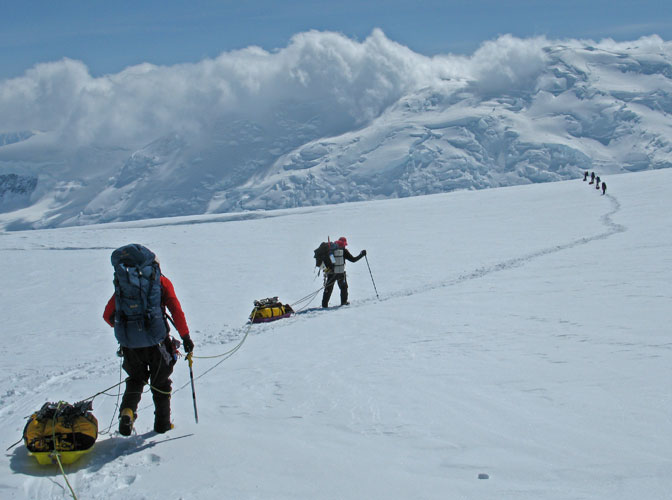
Today we’ll carry food, fuel and other supplies to Camp I at 12,500 ft. This is also an important acclimatization day.
Day 6
Today we’ll make the move from base camp to Camp I and fortify our position there. Spectacular scenery and engaging route finding make this an enjoyable ascent.
Day 7
Today we’ll carry food, fuel and other supplies to Camp II, our high camp, at 14,500 ft. Our high camp is situated in the saddle between Mt. Bona and Mt. Churchill.
Day 8
Today we’ll move up to Camp II in preparation for our bid for the summit.
Day 9
Summit day. Our route will take us up the broadly defined East Ridge of Mt. Bona. Views of Mt. Logan, Mt. St. Elias, and the entire range make this an unforgettable route.
Day 10
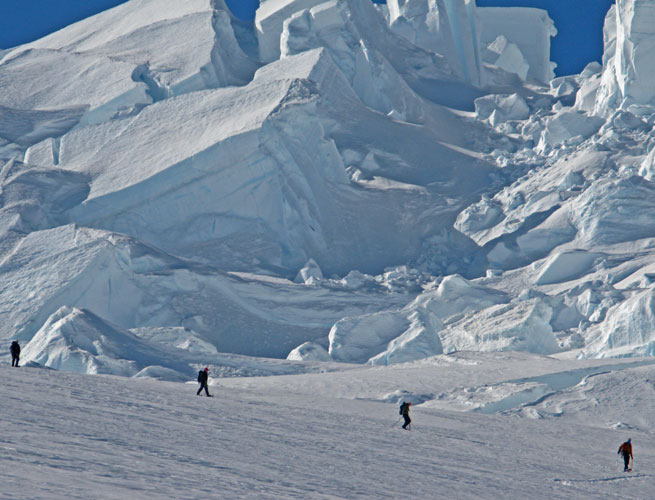
Today is an extra summit day in case of poor weather the previous day. If we achieved the summit of Mt. Bona the previous day, we can attempt the West Ridge of Mt. Churchill on this day. Two summits in one trip! Alternatively, we may choose to descend to base camp.
Day 11
Descend to base camp and fly to Chitina.
Day 12
Drive to Anchorage, enjoy a celebration dinner, and catch an evening flight home.
Note: This is an approximate itinerary and may be adjusted according to weather, bush flight schedules, acclimatization, group speed and ability. Daylight hours are unusually long so we have a lot of time to refine our snow camping and climbing skills.
Mount Bona Expedition Equipment List
- Backpack: Internal frame, 50-80 liters. Guides’ pick: Osprey Aether 60
- Sleeping bag: Down or synthetic bag rated between 0-30 degrees with compression stuff sack.
- Sleeping pad: Closed cell foam & air mattress combo Guides’ pick: Thermarest NeoAir
- Bowl, spoon, cup: Plastic/lexan
- Pocket knife: 2-3 inch blade, simple, light
- Thermos

- Water bottles: 2 liters combined capacity; bottles or bladder.
- Water purification system: We recommend simple iodine tablets, but pumps are acceptable.
Clothing and Personal Equipment
- Hiking boots: Sturdy, waterproof, comfortable boots. Please contact us with questions or further recommendations.
- Socks: 2-3 pair of medium weight wool or synthetic blend socks.
- Base layers: Synthetic t-shirt and synthetic underwear
- Soft shell pants: warm enough for cool mornings and nights, yet light enough for warm days. Guides’ pick: OR Ferrosi
- Soft shell jacket: light weight. Guides’ pick: OR Ferrosi
- Insulated vest: down or synthetic. Guides’ pick: OR Transcendent
- Hard shell jacket: waterproof and breathable, no insulation. Guides’ Pick: OR Helium
- Insulated Jacket & Pants: Down or Synthetic
- Down Booties
- Hats: one with brim, one for warmth
- Balaclava or Buff
- Gloves & Mittens: at least two pair. One very thick and another mid weight.
- Sunglasses
- Sunscreen and lip balm: water/sweat-proof
- Headlamp: with extra batteries.
- Toiletries: Toilet paper, baggie for used TP, toothbrush/paste, wet wipes, hand sanitizer, etc.
- Personal first-aid kit: for your personal meds/needs; guide will have a large one as well
- Stuff sacks: for convenient packing
- Camera
- Lunch food: Everything you eat between breakfast and dinner. May include: bagels, dried meats, cheese, trail mix, candy bars, peanut butter, etc…
Climbing Equipment
- Harness: Adjustable leg loops are essential.
- Locking carabiner: Pear shaped, wide mouth.
- Helmet
- Boots: Hiking boots, or alpine boots – many options. No tennis shoes.
- Crampons: General mountaineering crampons (for May/June trips only – conditions dependent)
- Mountaineering Axe: 60 – 70 cm mountain axe (for May/June trips only – conditions dependent)
Training & Follow Up Climbs
As always, being in excellent physical shape is an important component of our our programs. A good mixture of cardiovascular fitness, muscular fitness, and especially core strength will help you to maximize the potential rewards that are possible on a great climbing trip.
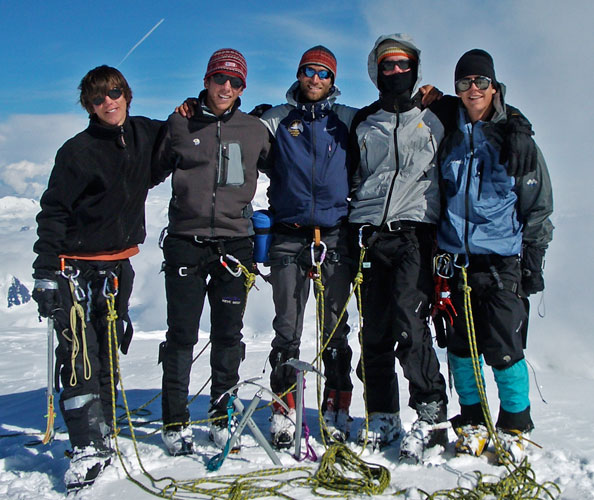
1 Before Your Expedition
The Mount Bona Expedtion requires that you have successfully completed a basic or introductory level mountaineering course, either our Intro to Mountaineering and Expedition Climbing Course or similar. Previous technical experience is not required for this expedition, though it can be very useful. Most important is being in excellent physical condition. A combination of cardiovascular and muscular (especially the lower body) training is particularly relevant on an expedition of this nature and will insure you are ready for the rigors of traveling on glaciated terrain at altitude.
For the West Rib Expedition you should be ready for:
- 8 – 10 days on a remote glaciated high-altitude mountain
- Carrying a pack loaded with food and gear up to 65 lbs.
- Fickle weather, cold temperatures, warm temperatures, delays, other factors beyond our control
2 Follow Up Climbs
I hope that I might be able to get out to Ouray again before ice season ends. If so, I’ll definitely get in touch with you. Working with the local experts really makes a difference. Thanks again for everything! - N. Subashki. 2011 Private Program
Anchorage, Alaska: Getting There
Our expedition begins in Anchorage, Alaska where we’ll spend a day organizing food, gear, and other logistics prior to driving to Chitina, Alaska and our bush flight into the mountains. Anchorage is Alaska’s largest city and a hub for travelers from around the globe. Anchorage serves as both a hub and gateway for climbers and other tourists as they head to their planned destinations in the great (and huge!) state of Alaska.
Flights: The best option for flying to the area is to fly into Anchorage, Alaska. We will pick you up at the airport and then provide transportation for the rest of the time you are in Alaska.
Driving: Driving to Alaska is an experience like no other. If you’re into the “full experience” consider driving up to Alaska on the AlCan. It might just turn out to be the highlight of your trip!
- Seattle, WA to Anchorage, AK: 34 hours
- Ouray, CO to Anchorage, AK: 48 hours
Hotels: If flying into Anchorage early you’ll want to arrange lodging for at least 1 night in Anchorage. We provide lodging in Anchorage on the first day of the program and below are a list of hotels that we recommend.
Additional Information
- Cost Includes:
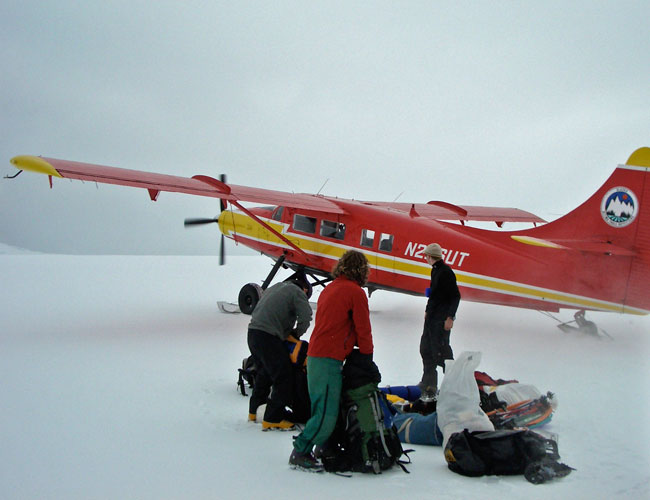
- Guiding and trip leadership with AMGA Certified Guides
- Round trip Transportation from Anchorage to Chitina
- 1 night of lodging in Anchorage
- Bush flights from Chitina round trip
- Breakfasts and dinners on the mountain
- Group camping and cooking equipment (tents, stoves, etc.)
- Group climbing equipment (ropes, etc.)
- Not Included:
- Transportation to Anchorage, AK
- Additional hotel costs before or after the program
- Personal Lunch Food
- 5% land use surcharge
- Trip cancellation insurance – recommended
- Personal alpine climbing clothing
- Costs associated with early returns, weather delays, or other factors beyond our control
- Guide gratuity
- Registration and Cancellation:
- Advance Registration is required for this program. You have the option to either call our office and register via phone, fill out our pdf Registration Form and send it in via fax or email, or utilize our secure Online Reservation System. All participants must read and sign an Assumption of Risks/Liability Waiver and agree to our Reservations and Cancellations Policies.
He was very thorough and safety conscious. I would highly recommend Nate to anyone and would love to travel again with him on another trip. Happy adventuring! - Tanya H. Expedition 2010
